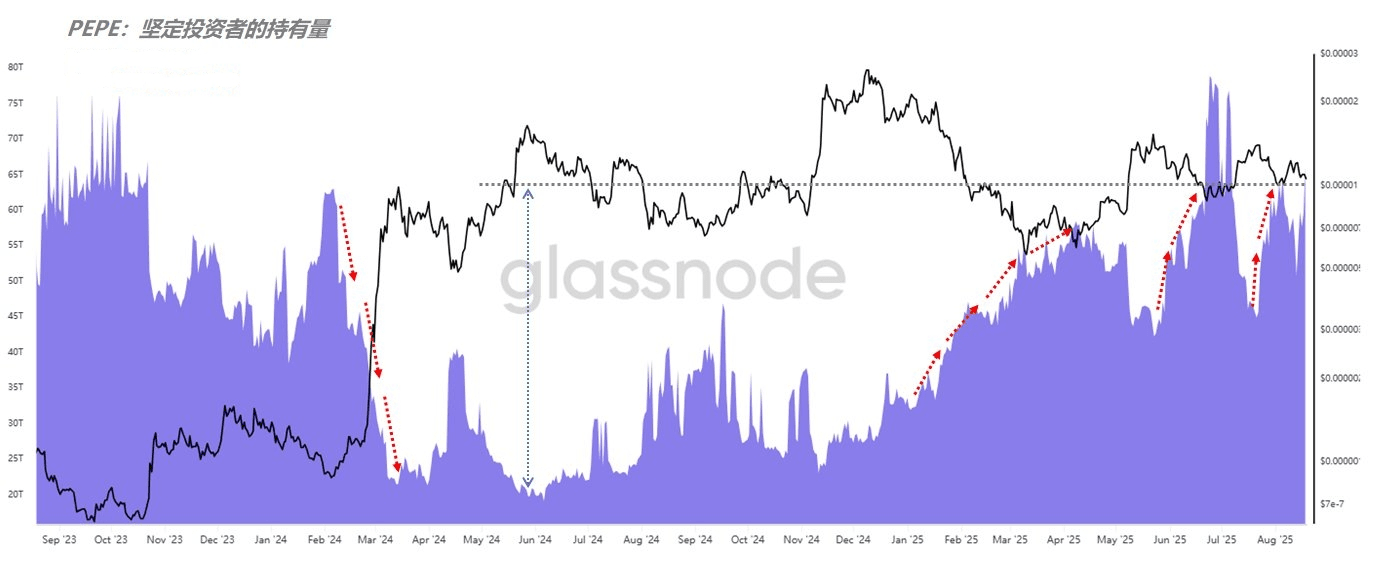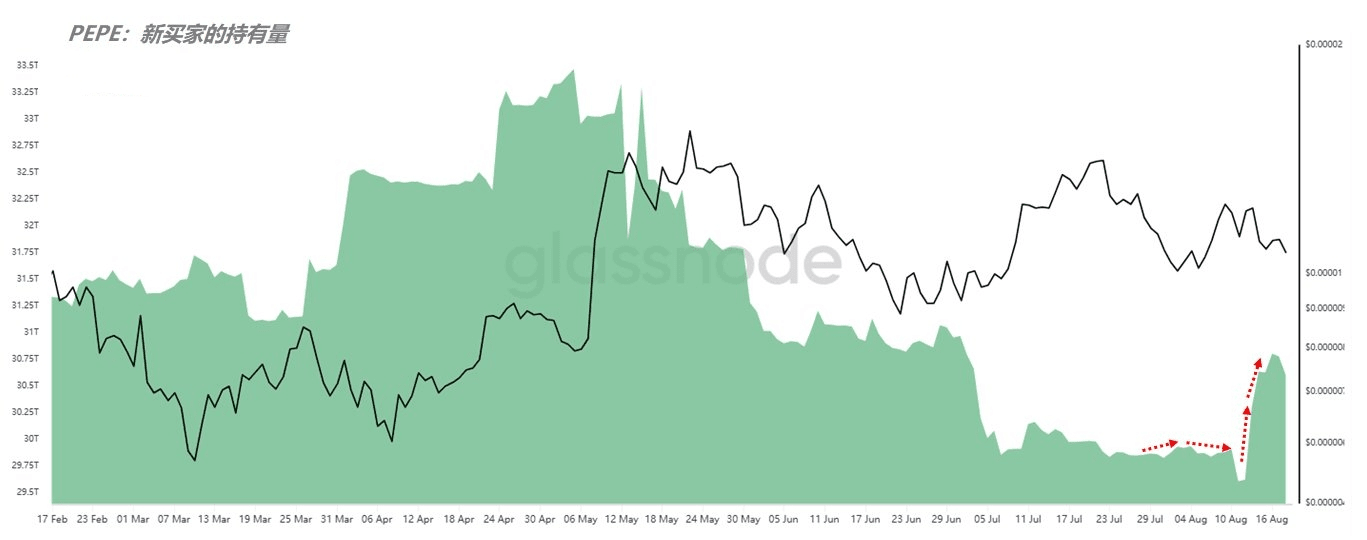Systematic analysis of altcoins requires a comprehensive integration of sentiment, supply and demand structure, positions, and behavioral data to form a convincing conclusion. This process is time-consuming and labor-intensive; more importantly, if continuous updates cannot be maintained, it becomes difficult for everyone to be informed of changes in key variables, leading to potential risks. Therefore, I prefer to control the update frequency within a range that ensures quality and timeliness.
Among the few assets I occasionally pay attention to, Pepe's data shows no significant flaws. The community is quite cohesive: during price pullback phases, a stable amount of capital continues to accumulate at lower prices, indicating that it is not an altcoin destined to 'go to zero' but rather an asset that some are willing to hold long-term despite volatility.

(Figure 1)
The reality is that current institutional focus remains on BTC and ETH. As a non-mainstream asset, Pepe struggles to attract significant overflow capital. Thus, the recent new entry data for Pepe is not ideal, which aligns with the situation of most altcoins. Looking back at the market launch from April to May this year, sentiment had strongly driven new capital to enter quickly; however, the current sentiment has not returned to that stage, only slightly improving during the recent pullback but still significantly below previous highs.

(Figure 2)
Based on the current situation, Pepe is more like a typical case of 'faith at the bottom, lack of increment at the top.' If your strategy is to exchange time for space, betting that 'as long as it doesn't go to zero, there will be cyclical opportunities,' then patience and cost management are more critical; if you expect it to act as a quick turnaround tool in the currently institution-led main cycle, it is not ideal in the short term, but long-term holding still presents opportunities.



